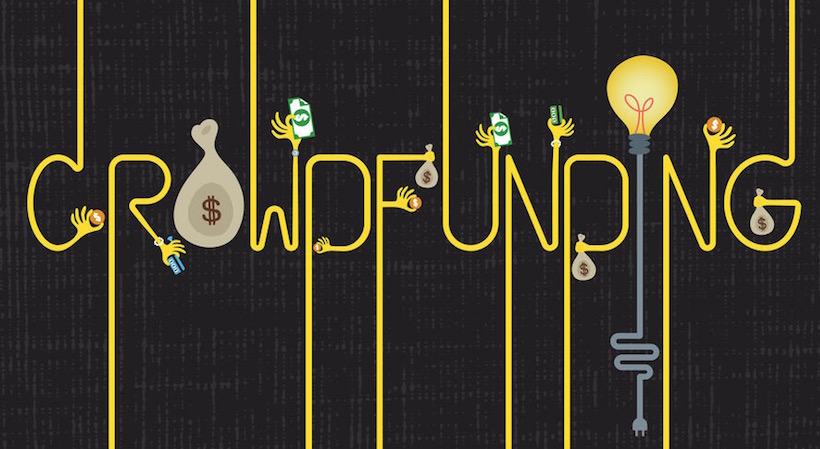As the economic shutdown continues, businesses are looking for funding to stay afloat. Federally funded programs have dried up, and public health concerns seem likely to prolong the economic shutdown. Thus, it’s important to use every resource at your disposal to keep your business afloat and emerge stronger on the other side.
One often neglected resource is your existing community! The folks who first embraced your business idea, your first customers, and the friendly strangers around you who value your contribution and want to see you succeed.
StartupNation exclusive discounts and savings on Dell products and accessories: Learn more here
If you’re considering making crowdfunding a part of your COVID-19 cash flow strategy, here are five helpful tips to keep in mind
Pick the right type of crowdfunding
A lot of people don’t know that crowdfunding doesn’t always mean donations. There are many types of crowdfunding platforms out there, including donation-based crowdfunding, rewards-based crowdfunding, equity crowdfunding and debt crowdfunding.
The general public is most familiar with donation-based crowdfunding sites like GoFundMe, where people donate to causes out of the goodness of their heart expecting nothing in exchange. The average GoFundMe campaign raises $1,500.
Rewards-based crowdfunding is common on Indiegogo or Kickstarter, where an entrepreneur may ask for contributions in exchange for a prepaid product.
Equity crowdfunding is a relatively new version of crowdfunding where people can invest in shares of up-and-coming tech companies. As venture capital markets dry up, this could be a great avenue for startups looking to sustain themselves and grow during COVID-19. This type typically raises hundreds of thousands of dollars.
Lastly, debt crowdfunding has emerged to play a big role in helping brick-and-mortar businesses raise capital by crowdfunding loans from their community.
Choosing the type of crowdfunding that aligns best with your goals is the first step to success!
Related: How Crowdfunding Can Get Your Startup Through a Rough Patch
Build a compelling, community-centric story
People support crowdfunding campaigns when there is something at stake. When you’re crafting your campaign language, ask yourself, “How does my business or your project benefit the community?”
This is not just a campaign for your business, it’s a chance for people to participate in helping you do more of what your community loves. People contribute because of what you and your company’s products or services bring to the table.
If you share that authentic story, people will see your campaign as something bigger than just helping you; they’ll see that they are making a difference in their community through you.
Framing your campaign through the lens of community can help recruit allies and friends to your cause. With COVID-19 leading to an explosion of crowdfunding campaigns, it’s more important than ever to share why contributing to your campaign is important, not just to you, but to your broader community.
Don’t go straight to social media
Once most people create a crowdfunding campaign, they’re eager to share it with the world, so they sprint to social media. My big advice to entrepreneurs is to wait!
The psychology of crowdfunding tells us that people are less likely to contribute to a campaign that is zero percent funded than one that is 40 percent or 80 percent funded.
Instead of going straight to social media, reach out to your closest friends and family first. If they can contribute, it gives your campaign initial visible traction and improves its credibility.
With a credible campaign already partially funded by your closest fans, your social media efforts will convert even more contributions!
There’s nothing wrong with asking for a contribution multiple times
There’s a reason why big brands run advertising campaigns constantly: repetition motivates action. When you’re running a campaign, keep in mind that it takes multiple asks for people to contribute.
After that initial funding, post about your campaign on social media frequently while making each post special by changing the images or text associated with that post.
When you’re doing personal outreach, reach out during key milestones such as the campaign launch, the halfway point, and as the campaign nears its end date. This keeps your message repetitive, timely and helpful.
Sign Up: Receive the StartupNation newsletter!
Thank your supporters before the campaign ends
Another practice that first-time crowdfunders often forget is to thank their contributors before the campaign is over.
Your contributors can be a powerful motor propelling your campaign to success, and encouraging your contributors to share your campaign on social media can get your campaign in front of a whole new audience. You can also encourage them to write an endorsement for your campaign that you can then share on social media. All of these great ways to increase the value of an individual contribution can be unlocked with a heartfelt thank you note.
While raising funds is the primary reason for running a campaign, crowdfunding also lets you build a supportive community that can be there for you long after the campaign is done, as long as you cultivate that relationship.
Supported by Rapid Finance






